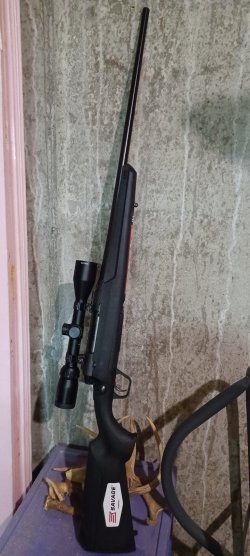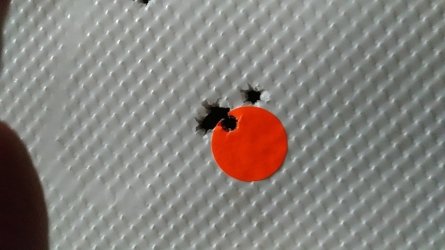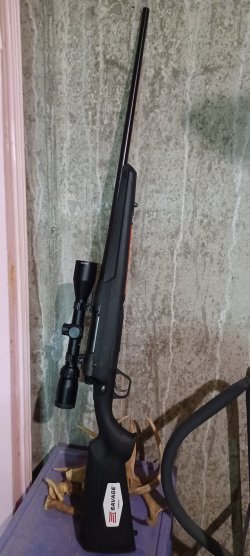Thought I'd make an update to this thread in case anyone checks it out later with 250 Savage or Axis build questions.
Both rifles were completed on Axis actions. One is a youth hunting rifle built on Savage youth model Axis with a Shaw sporter barrel that I picked up from a LRH member. The second is built on a Savage Axis II XP in wood stock with a Shilen heavy varmint barrel that I got from another LRH member.
Both builds were easy, straight forward, and inexpensive. In fact, they can hardly be considered builds at all. The re-barrel task is not hard, but check out the Savage shooters forum for tips on barrel removal as they have a lot of debris under the barrel nut (I believe it is media they use for texturing the barrel and action at the factory), and it can ruin the threads if you're not carefull during removal. Setting the head space is simple on Savage rifles. I ended up getting the help of a gunsmith, but he confirmed I was ok setting it with my go gauge, even though the factory Hornady ammo was initially a slightly tight fit on the Shaw barrel. Just had to back off the gauge ever so slightly to correct that. I had to do a little trigger work on the youth Axis, and open up the barrel channel on the wood Axis II, but those were not complicated tasks.
The Axis platform is easy to build on, but it is different than the Savage 10/110. The surface contact areas and lug system are not the same. It does have a more fully enclosed receiver, meaning the top isn't fully open above the ejection port like on a standard 10/110. Rather, it has more metal up top with smaller ejection port that resembles the Savage target model actions. Based on that, it appears to be more robustly built than the 10/110. Whether it is capable of the kind of top accuracy needed for long range hunting is not something I can speak to yet, but I think it has promise. I have less than $1000 in both guns combined (not counting the glass on the wood model). That was possible by finding great deals on complete Axis donor guns (the XP included a scope, and both rifles earned a $75 rebate from Savage), and great deals on barrels from LRH members. I also now have two extra barrels.
Both rifles shoot factory Hornady and HSM ammo well enough. The youth model was shooting 3-shot groups in the .9 to 1.5 inch range once it was zeroed. The wood stock model shoots slightly better (but it has better glass and a better trigger). Not much difference in the accuracy of the factory ammo other than a 1" or so shift in POI with the youth model. Neither gun has had any additional work yet to improve accuracy and they're both good enough for close-in hunting (200 yards or so) right now.
The youth model will not likely be changed much. I did a little work on the standard trigger (not an accu-trigger) to lower the pull weight and smooth it up. It needs a better scope (the XP scope is not very clear, has short eye relief, and has noticeable parralax at 100 yds). It would be worth putting a shim kit in the bolt to smooth it up, and a better trigger, if the grandson takes to it. I think he'll like the size, weight, and low recoil.
The wood stocked Axis II will likely be an ongoing project gun. I hope to get into reloading soon, and that will be the gun I use for learning, partly because 250 SAV ammo is so darned expensive and there are so few options. I will most likely bed the rifle and will be looking at a shim kit for the bolt. My hope is to make it a consistent sub-moa shooter that I can use to learn with and enjoy at the range or on a deer stand.
I'm quite pleased with these two new "nostalgia" guns, and would definitely recommend this approach to anyone looking to learn something new and create a personalized rifle on a budget.
And last, thanks to all the support (advice and materials) that I received from the LRH community, especially
@std7mag and
@1stpitch .



